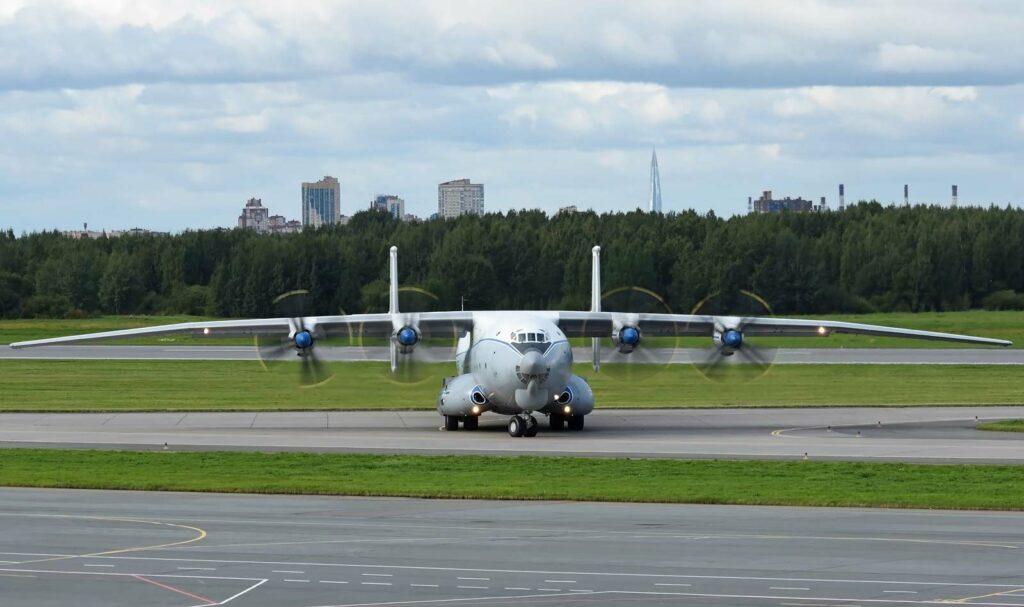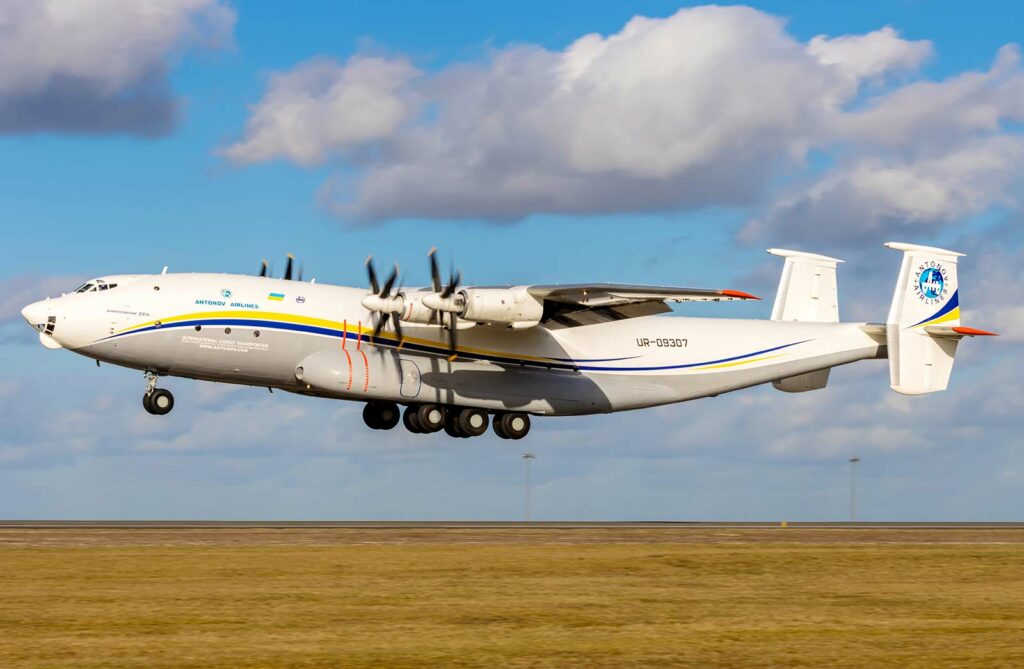The Antonov An-22 Antei is a colossal turboprop freighter, renowned for being the world’s largest turboprop-powered aircraft, designed for heavy military and civilian lifting.
In brief
The Antonov An-22 Antei, a strategic airlift cargo aircraft, holds the title of the world’s first widebody transport aircraft and the largest turboprop-powered aircraft. Introduced in the 1960s, it features four powerful Kuznetsov NK-12 engines, driving contra-rotating propellers. Its distinctive high-wing design, twin tailfin, and rugged landing gear allow operations from undeveloped runways. With a maximum payload capacity of 80 tons, it was designed for transporting heavy machinery, troops, and oversized cargo, demonstrating exceptional performance in both military and humanitarian missions. Its capabilities include airdropping large payloads and vehicles, showcasing versatility and reliability in various operational contexts.
The Antonov An-22 Antei stands as a monumental achievement in aviation, embodying the pinnacle of Soviet engineering prowess in creating a heavy-lift aircraft that set new standards in payload capacity and range.

History of the Development of the Antonov An-22 Antei
Developed in the 1960s, the Antonov An-22 was born out of the strategic necessities of the Cold War era, where the Soviet Union required a massive airlift capability to transport military hardware, including ballistic missiles and large troop contingents over vast distances. The program was initiated by the Antonov Design Bureau, with Oleg Antonov leading the development, aiming to create an aircraft that could enhance the mobility and logistical capabilities of the Soviet Armed Forces.
The An-22 was a response to the growing need for a super-heavy transport aircraft that could operate in diverse and challenging environments, from the Arctic conditions to hot desert airstrips. Its development was also propelled by the desire to demonstrate Soviet aeronautical capabilities on a global stage. The aircraft first took to the skies on February 27, 1965, quickly establishing several world records for payload-to-altitude and speed over a closed circuit.
Its NATO reporting name, “Cock,” was assigned as part of the standard NATO practice to give Soviet aircraft easily recognizable code names, though this name is less commonly used today.
Design of the Antonov An-22 Antei
The An-22’s design is characterized by its impressive dimensions, with a high-wing configuration that provides the necessary lift for heavy payloads and enhances its short-field performance. The aircraft is powered by four Kuznetsov NK-12 engines, the most powerful turboprop engines ever built, each driving contra-rotating propellers, which are key to its remarkable lift capabilities and efficient cruise performance.
The airframe incorporates a robust landing gear system, designed for unprepared runways, making it invaluable for deploying resources to remote or damaged airstrips. Its cavernous cargo hold is accessible via a large rear loading ramp, facilitating the loading of outsized cargo, vehicles, and troops. The cockpit and cargo compartment are pressurized, ensuring crew comfort and cargo safety during high-altitude flights.
Despite its size, the An-22 maintains impressive maneuverability and operational flexibility, attributed to its advanced aerodynamic design and powerful propulsion system. However, its massive size and weight necessitate significant runway length for fully laden takeoffs, and its operational costs are considerable, given its fuel consumption and maintenance requirements.
Performance of the Antonov An-22 Antei
The An-22 is renowned for its substantial payload capacity, capable of lifting up to 80 tons of cargo. The aircraft’s performance is a testament to its engineering, boasting a maximum speed of 740 km/h (460 mph) and a range of up to 5,000 kilometers (3,100 miles) with a full payload. Its service ceiling reaches 26,000 feet, optimizing its efficiency for long-haul flights.
The aircraft’s operational prowess was unmatched at its inception, capable of transporting cargo that no other aircraft could handle at the time, including oversized military equipment and substantial humanitarian aid supplies. Its ability to operate from austere and underprepared airstrips made it particularly valuable for military logistics and disaster response, demonstrating its strategic importance beyond mere specifications.
Variants of the Antonov An-22 Antei
The An-22 has seen a few variants over its operational life:
- An-22: The initial production version, primarily used for military and heavy cargo transport.
- An-22A: An improved version with upgraded avionics, increased fuel capacity, and enhanced operational range.
Each variant was built to optimize the aircraft’s massive payload capacity and long-range capabilities, with specific modifications catering to different operational requirements and enhancing overall performance.

Military Use and Combat of the Antonov An-22 Antei
The An-22 Antei played a pivotal role in Soviet military strategy, enabling rapid deployment of troops and heavy equipment, including serving as a critical asset during the Cold War for transporting intercontinental ballistic missiles and other oversized military cargoes. Its operational history includes extensive use in military exercises, demonstrating the Soviet Union’s airlift capabilities, and it has been involved in numerous humanitarian aid operations, delivering relief supplies to disaster-stricken regions.
The aircraft’s unique capabilities allowed it to partake in missions that were previously impossible for other transport aircraft, showcasing its strategic value in projecting military power and providing critical humanitarian support.
The Antonov An-22 Antei remains one of the most remarkable achievements in aviation history, setting a benchmark for heavy-lift transport aircraft with its unparalleled payload capacity, range, and versatility. Its contribution to military and civilian heavy transport operations has been immense, showcasing the enduring legacy of Soviet engineering and its lasting impact on global aviation capabilities.
Back to Transport planes.